EXCLUSIVE 1941 Dated - Captured Normandy ‘Battle of Cherbourg’ German Infantry Combat Map (Heavily Marked)
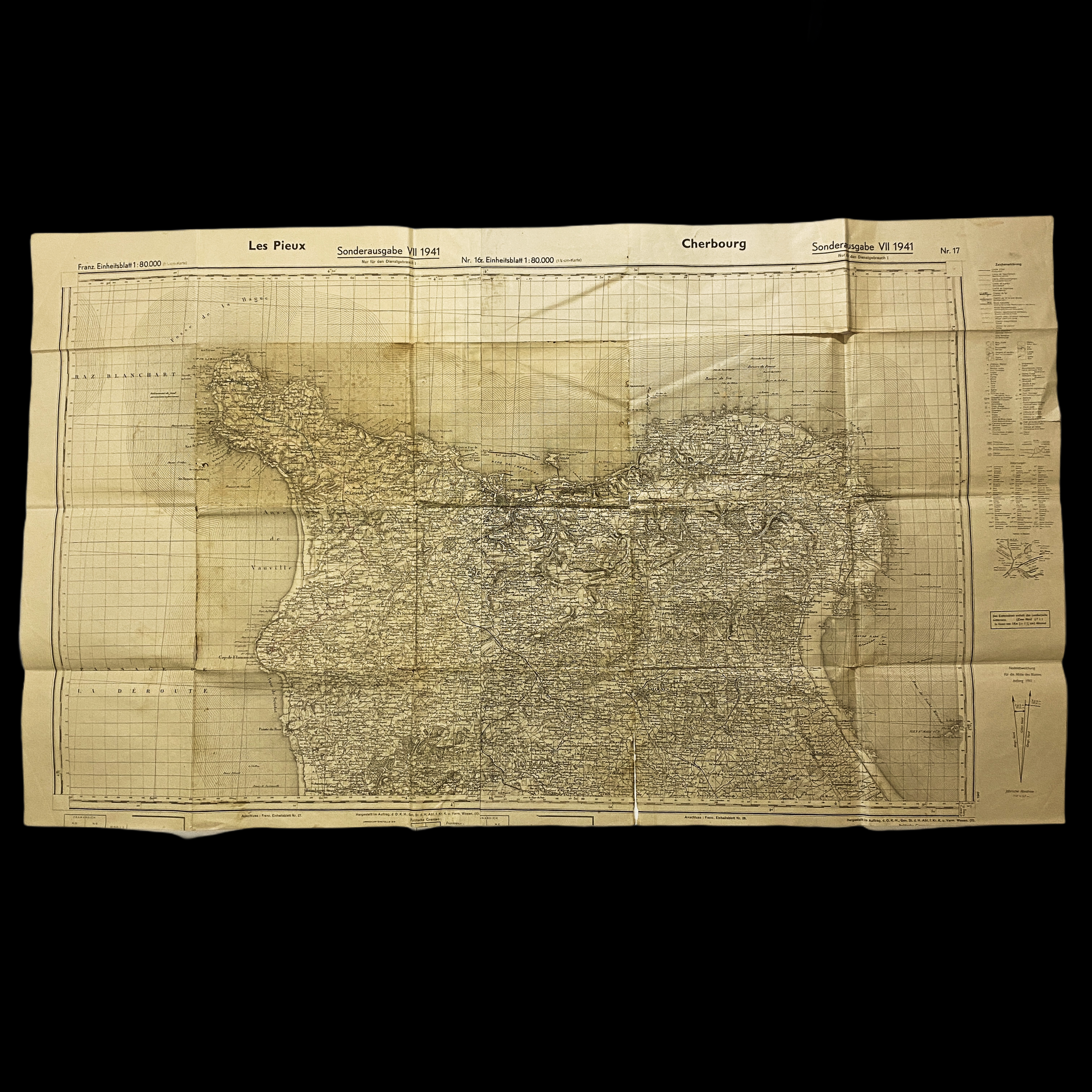
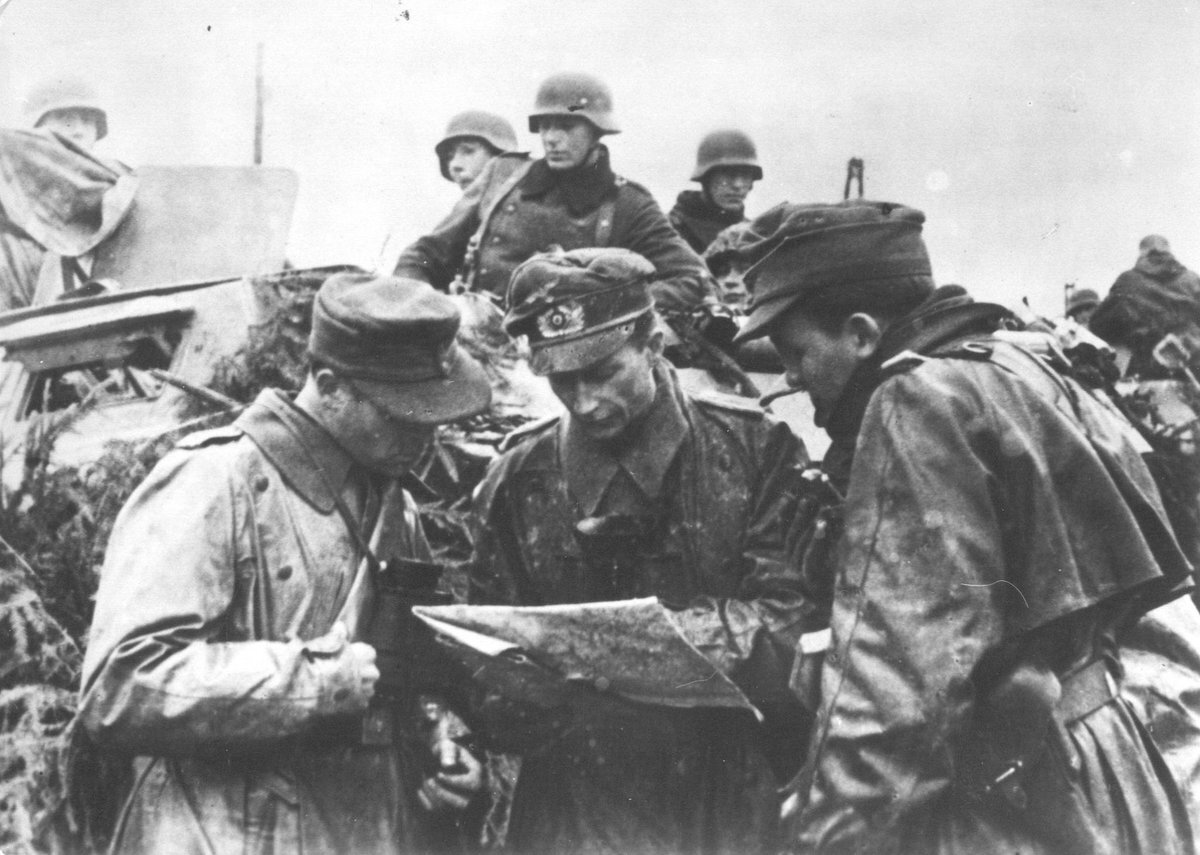
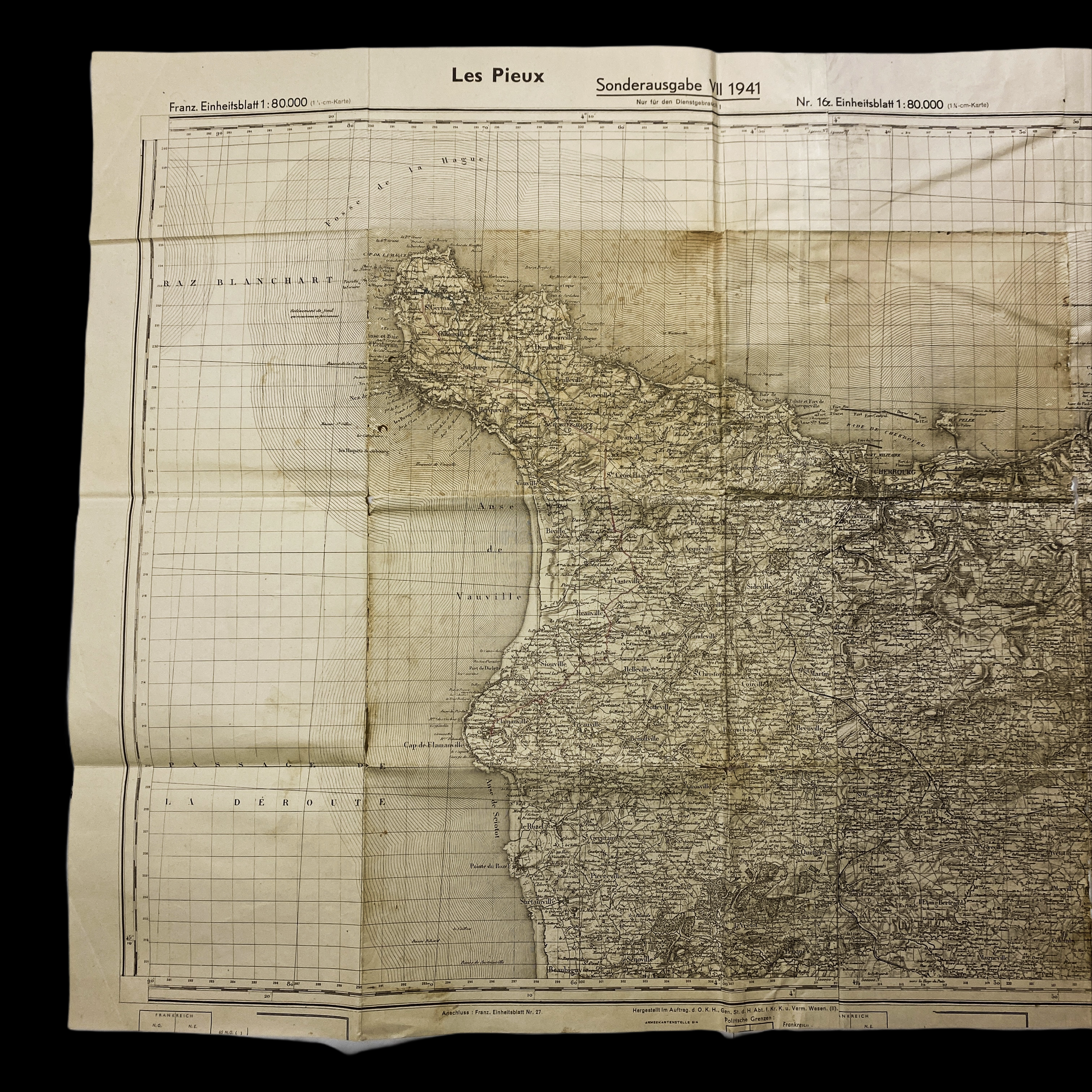


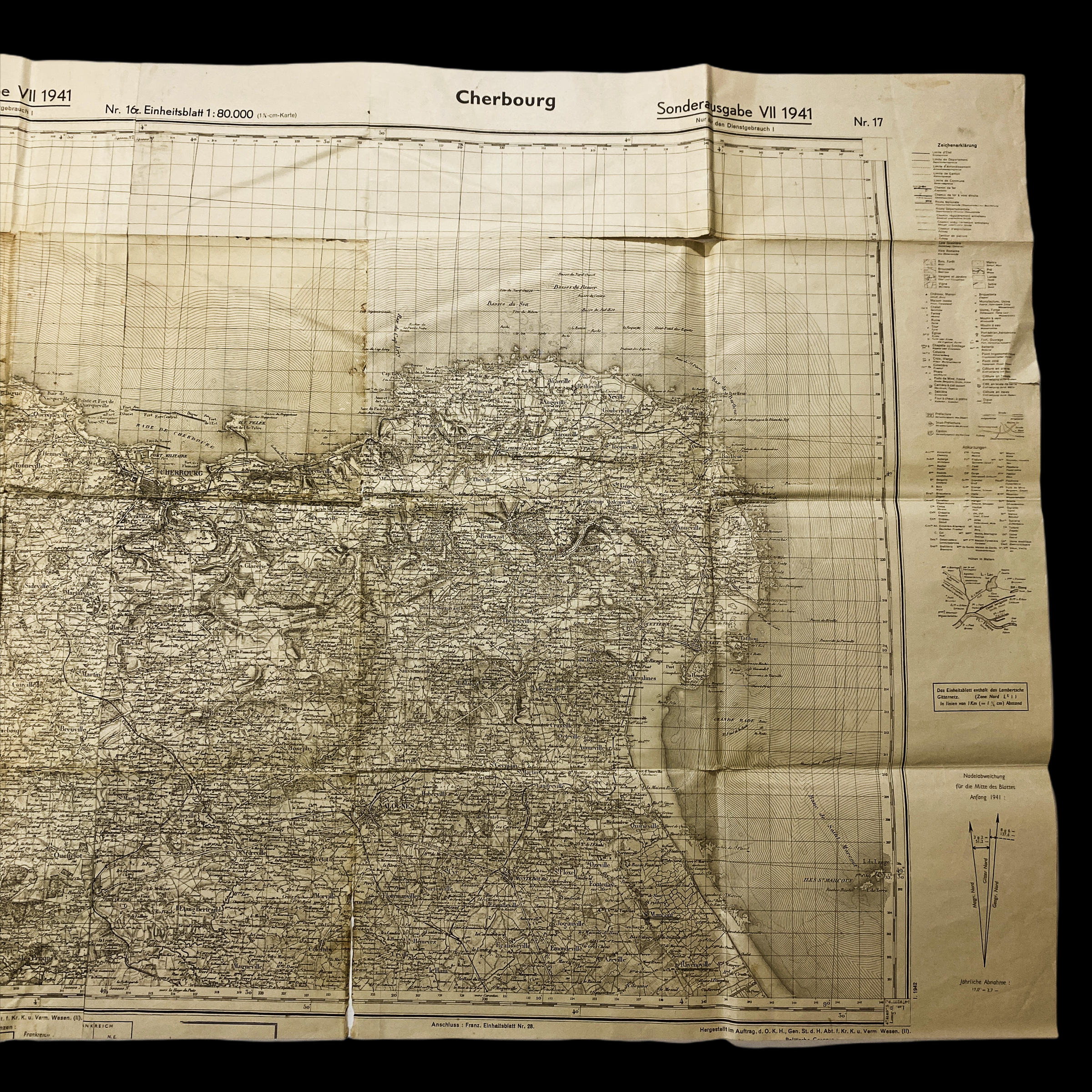

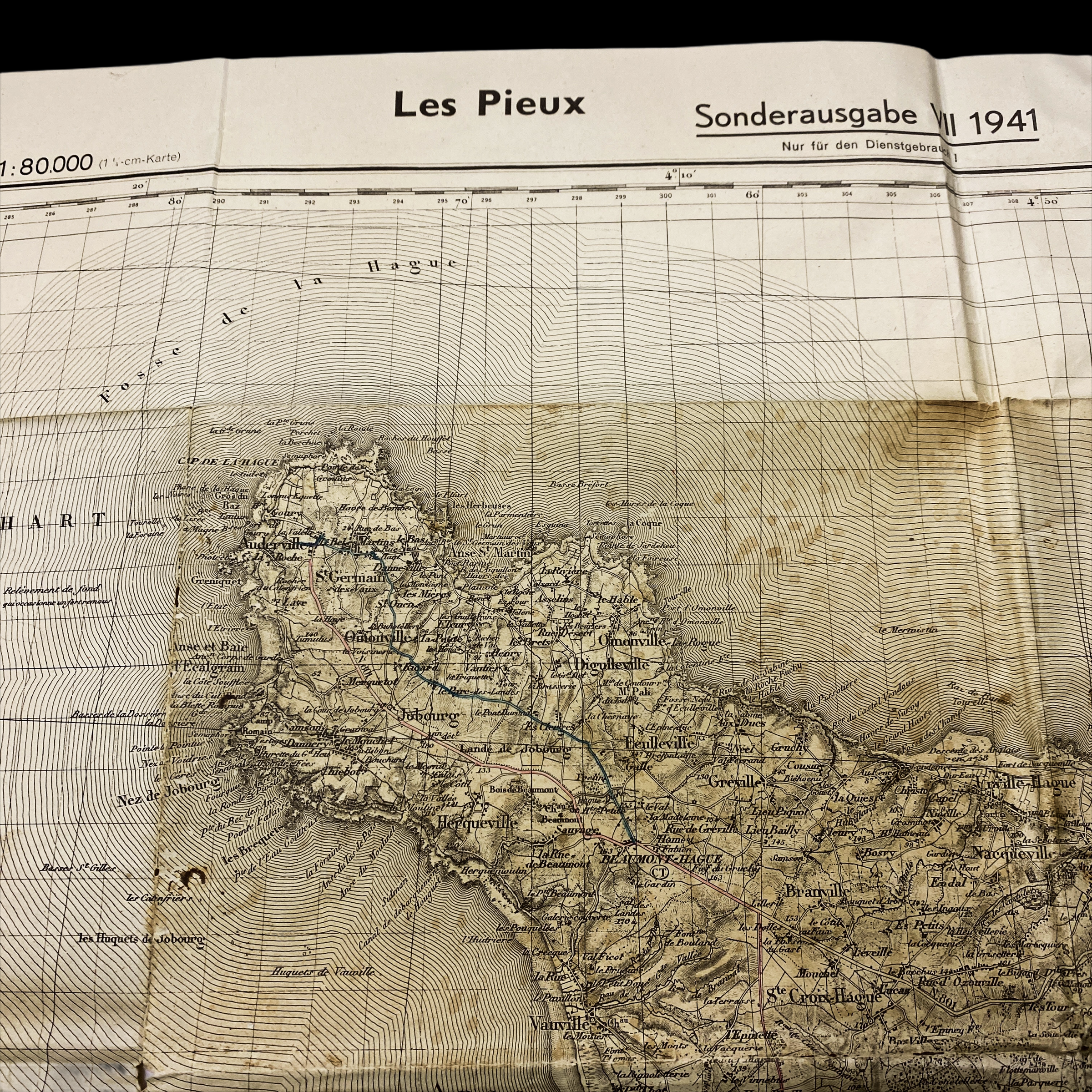

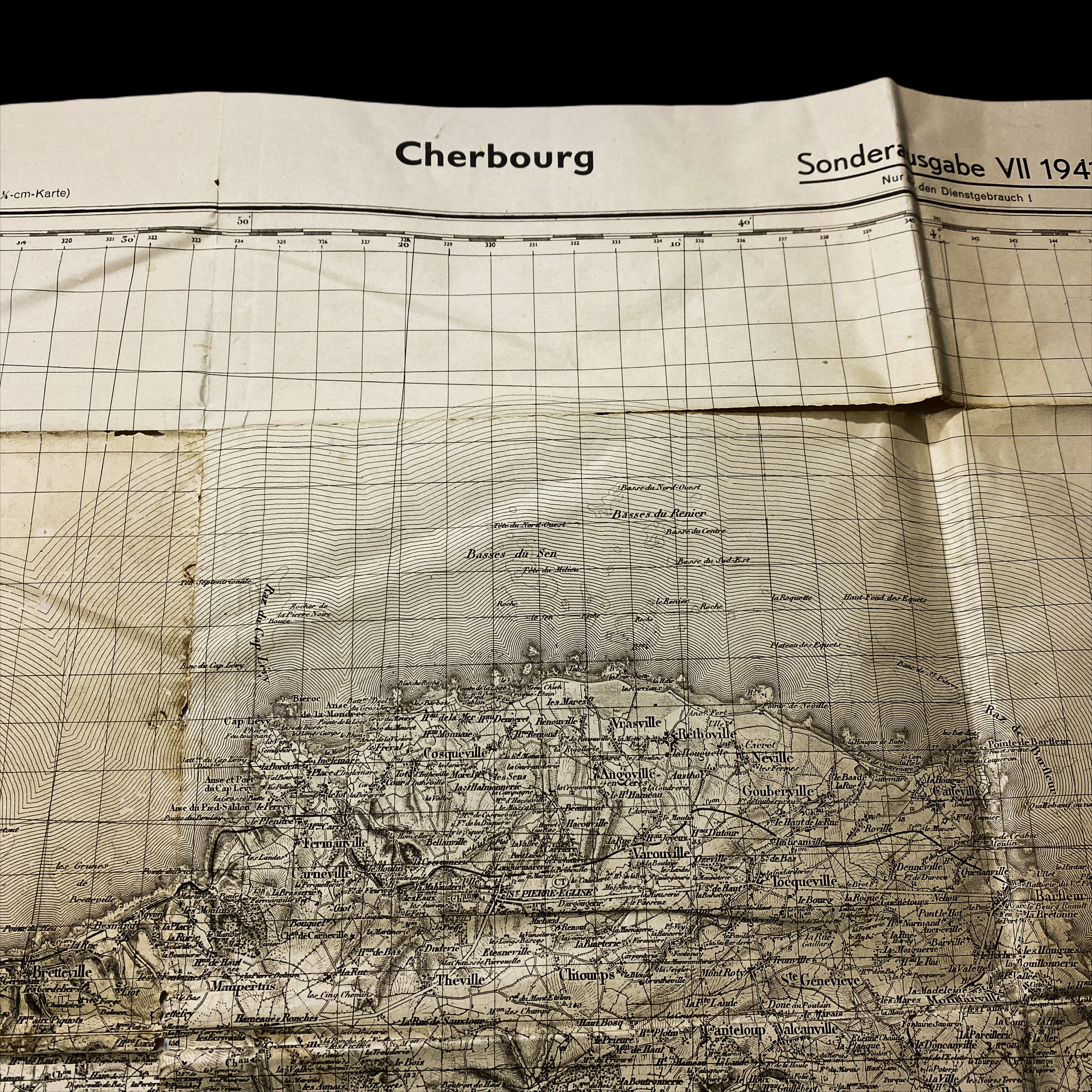
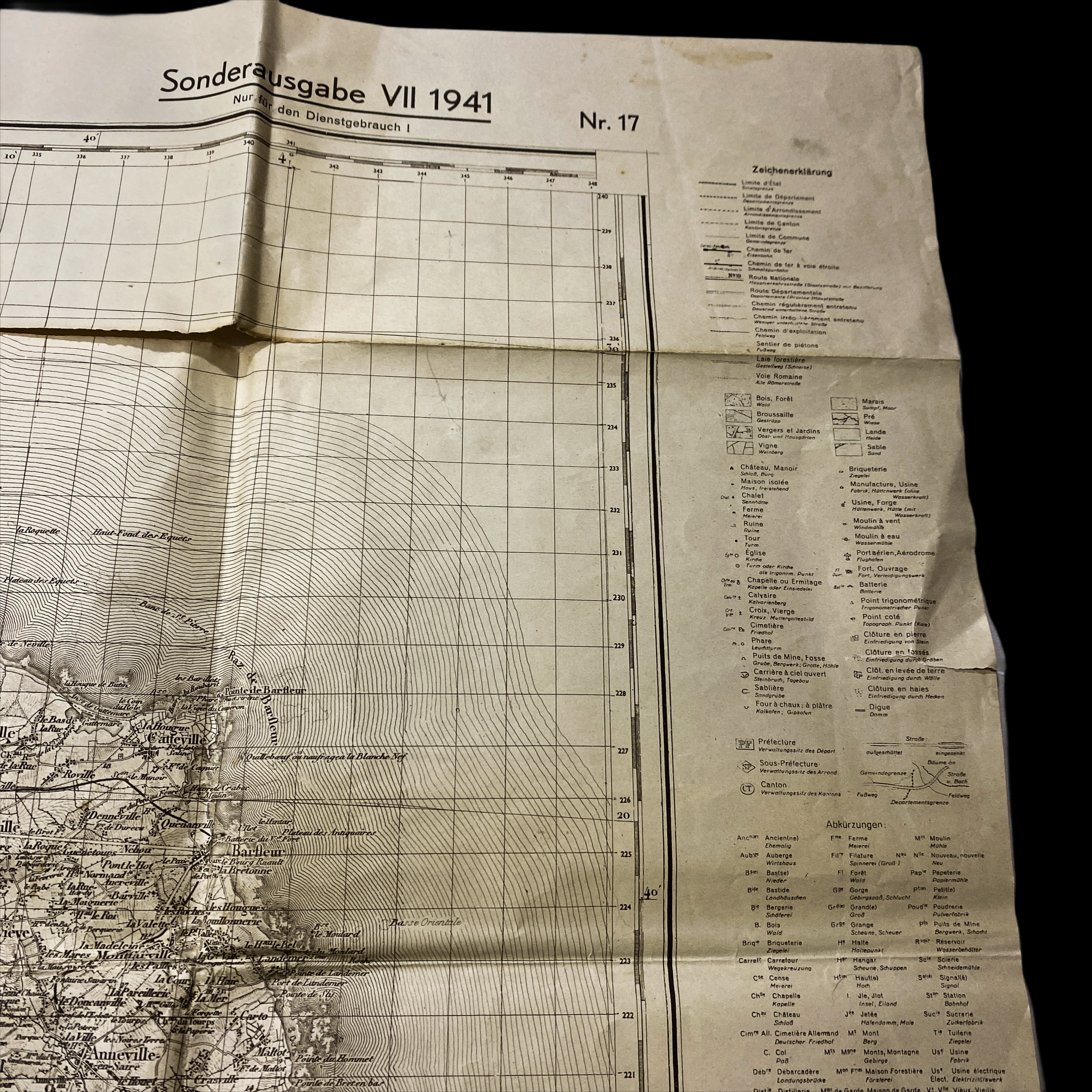

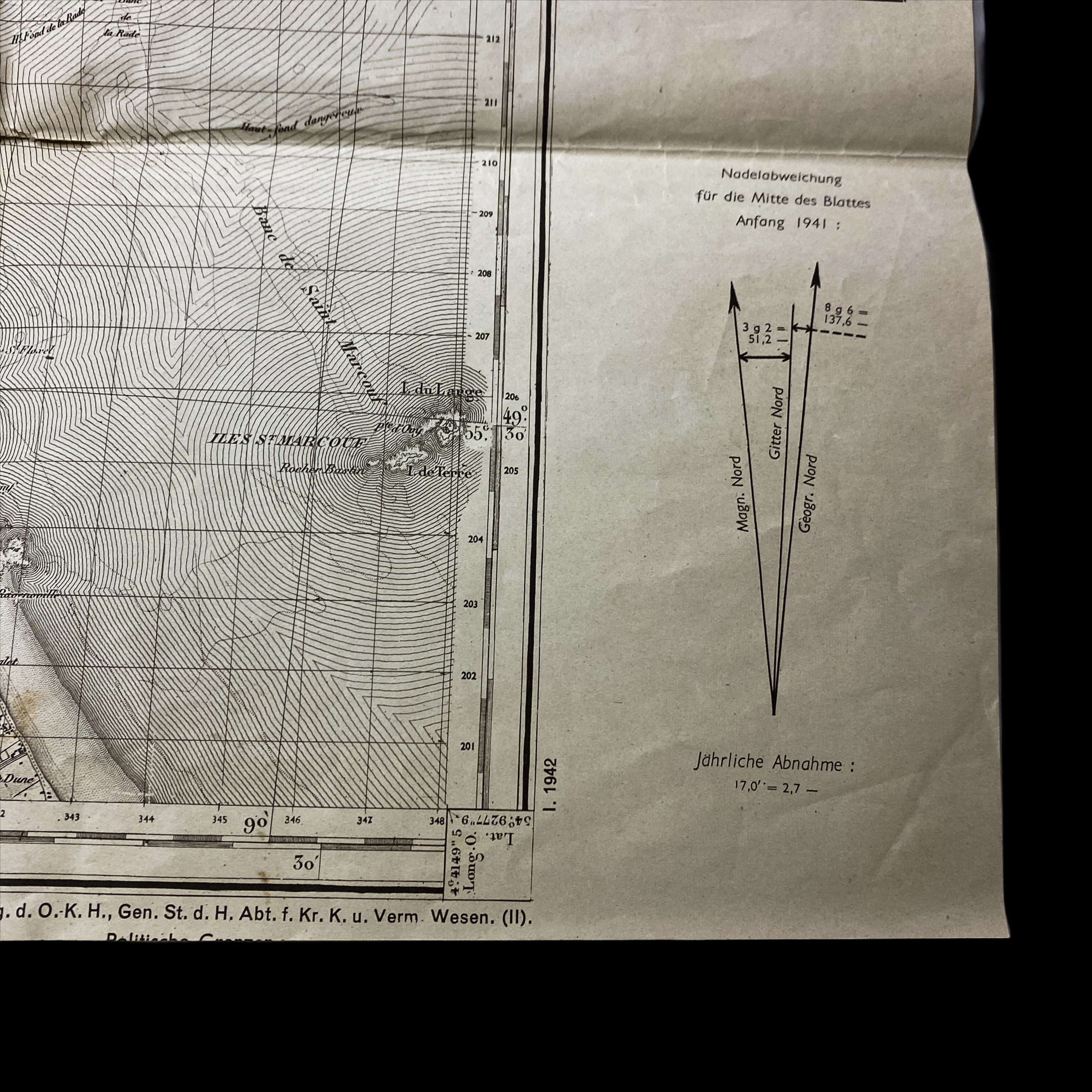




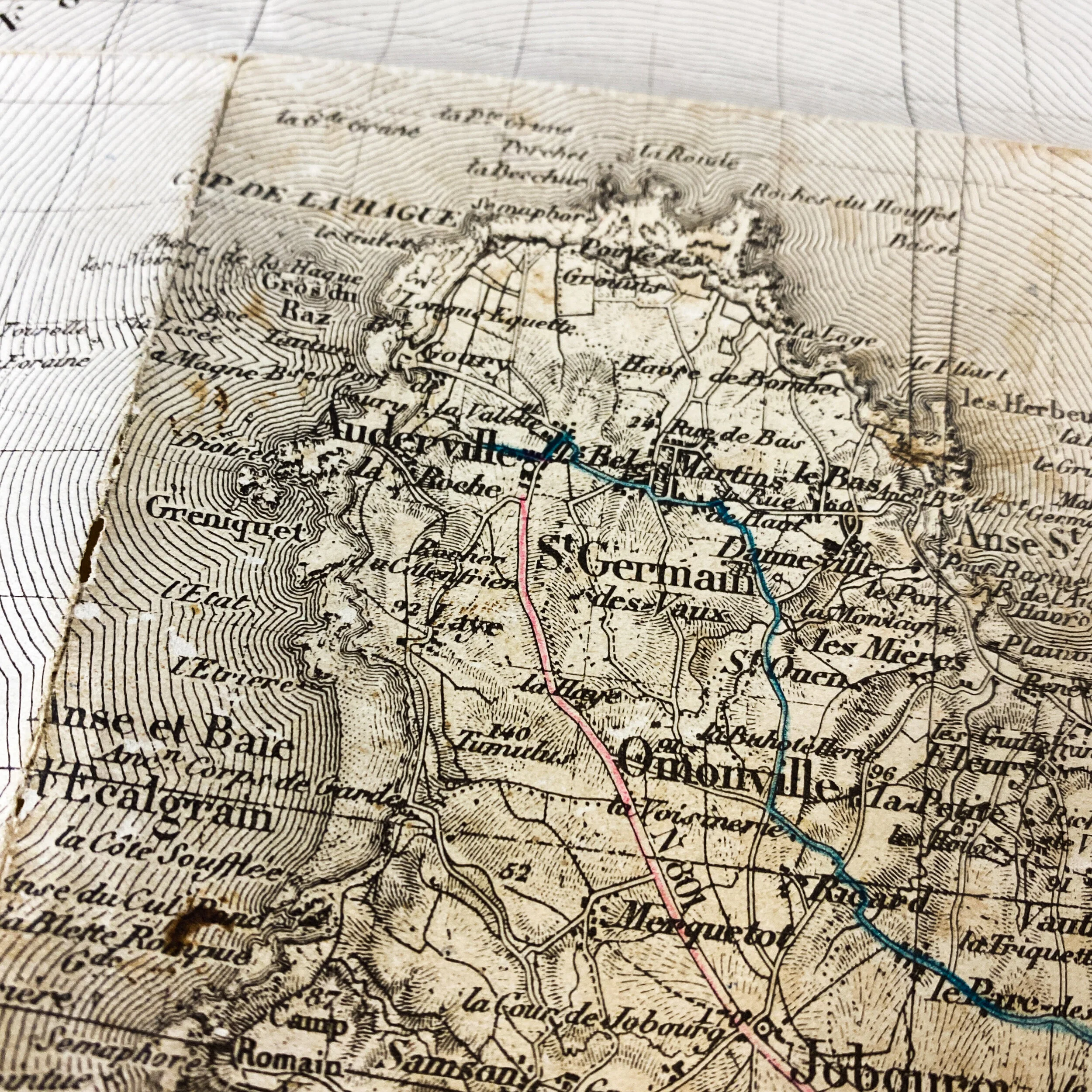
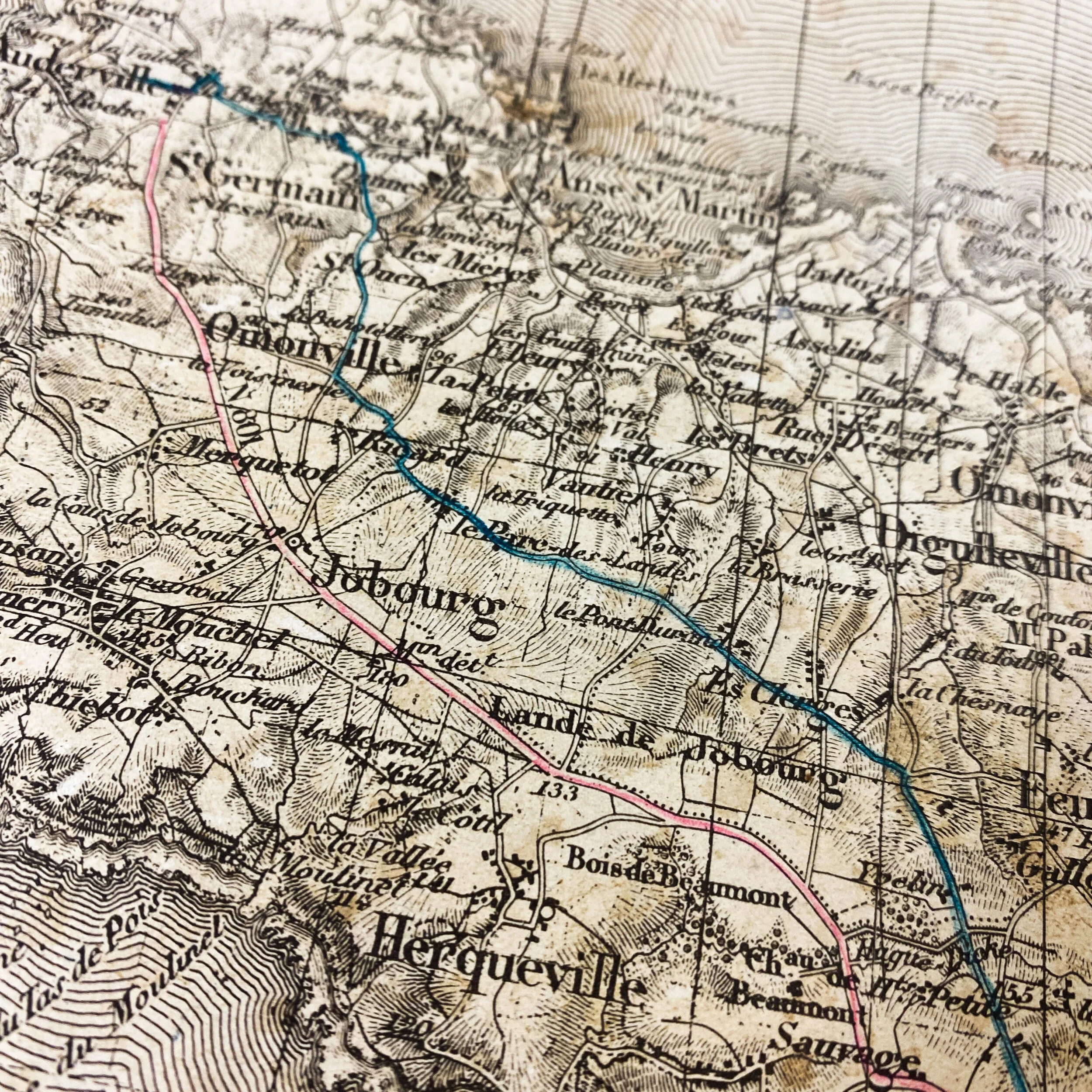

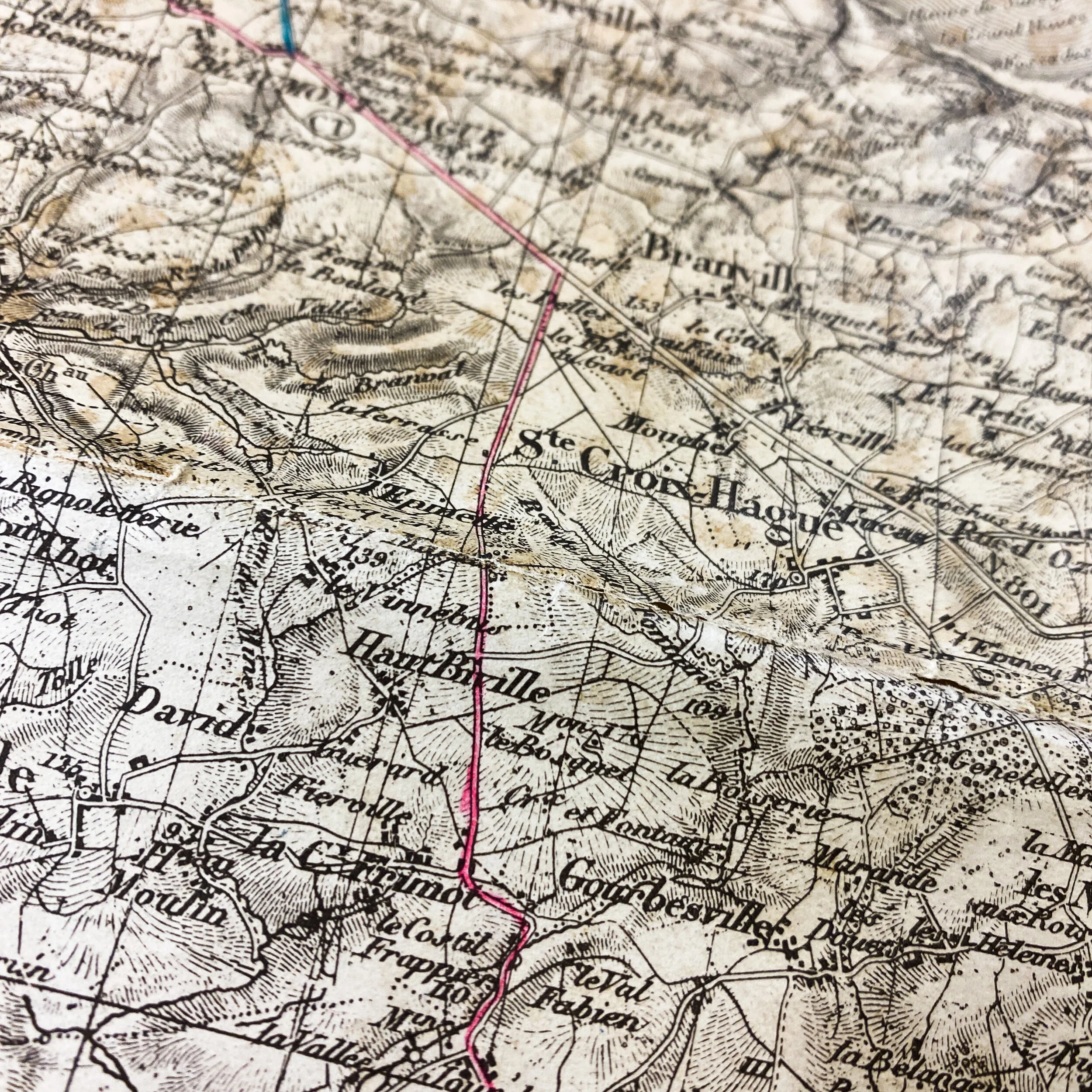



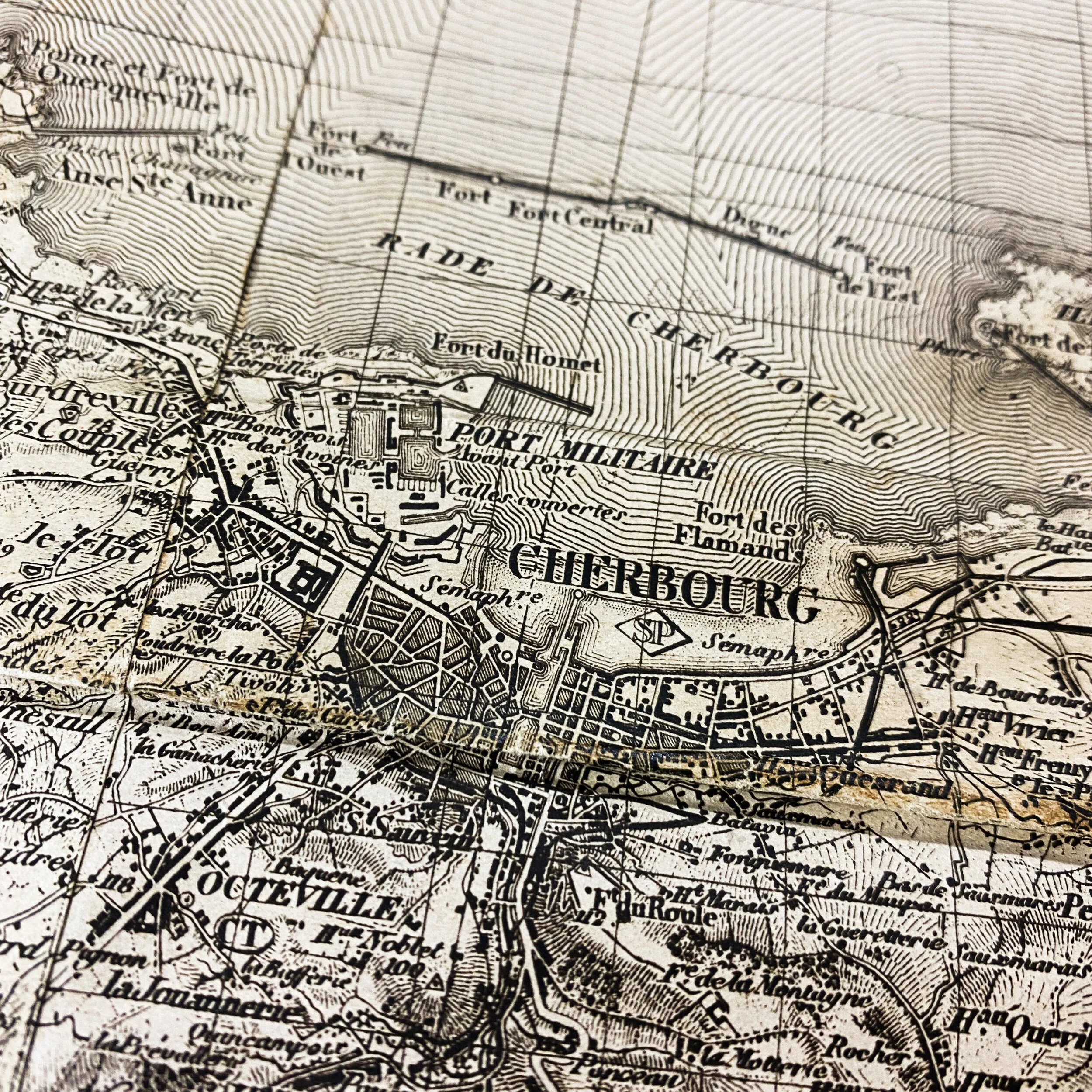

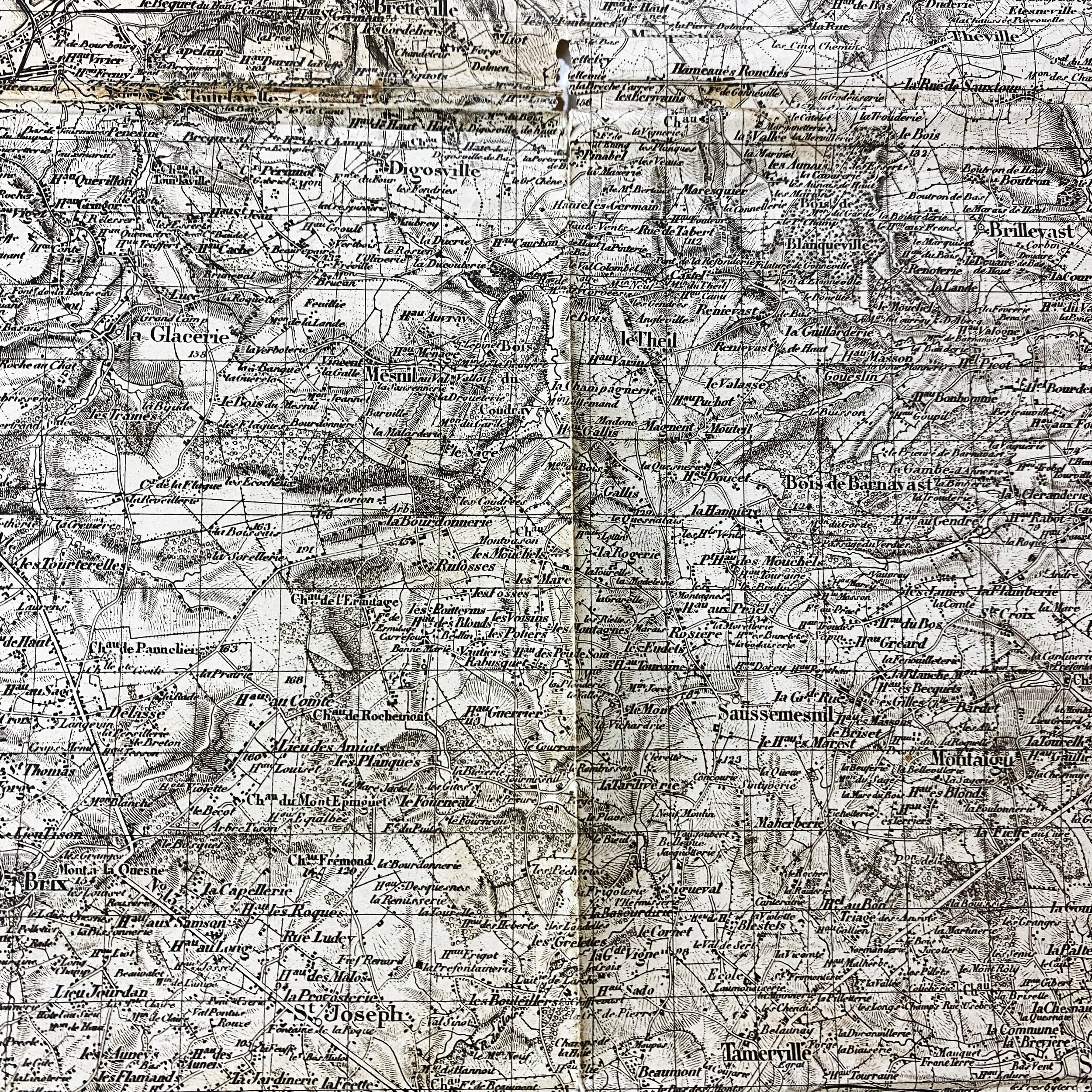
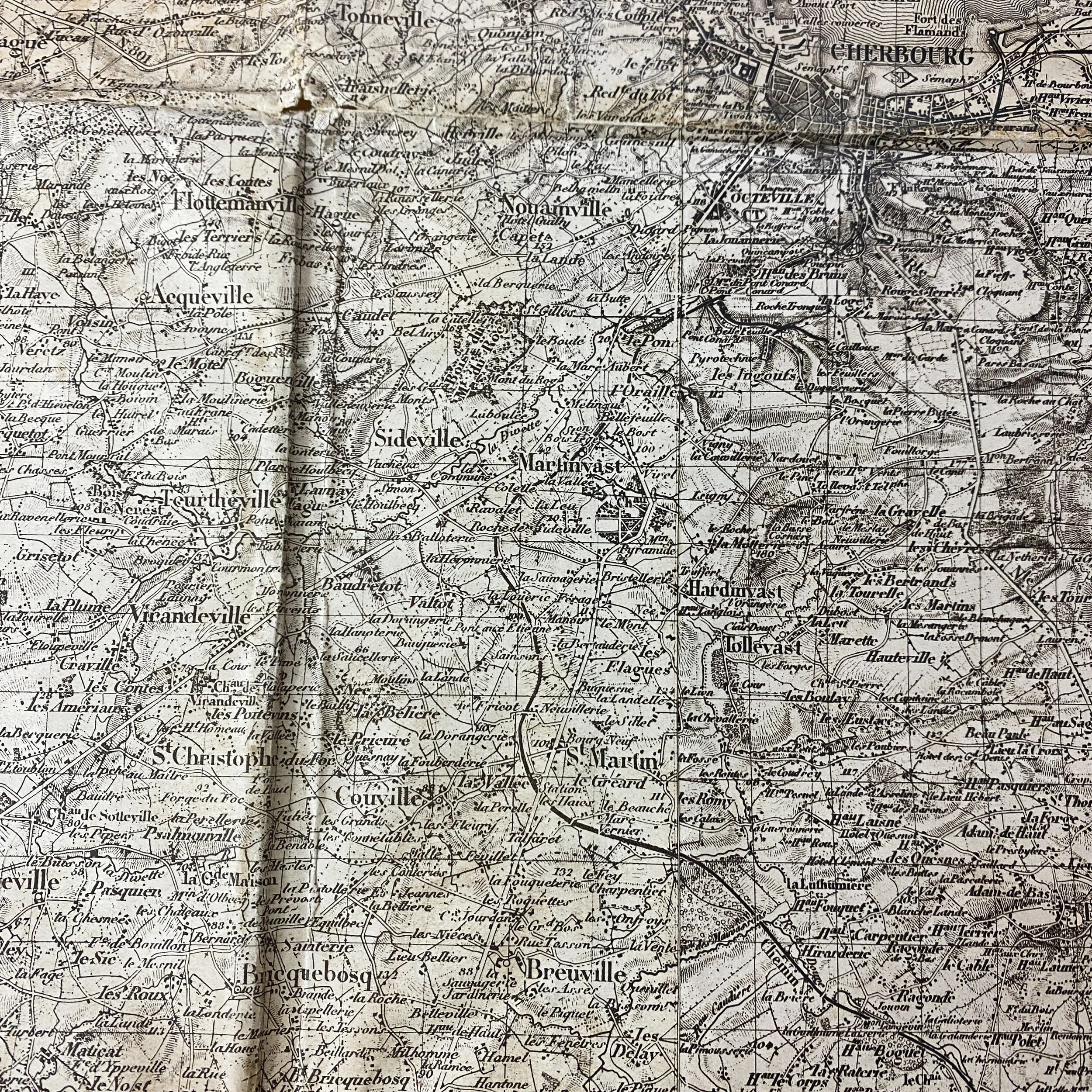

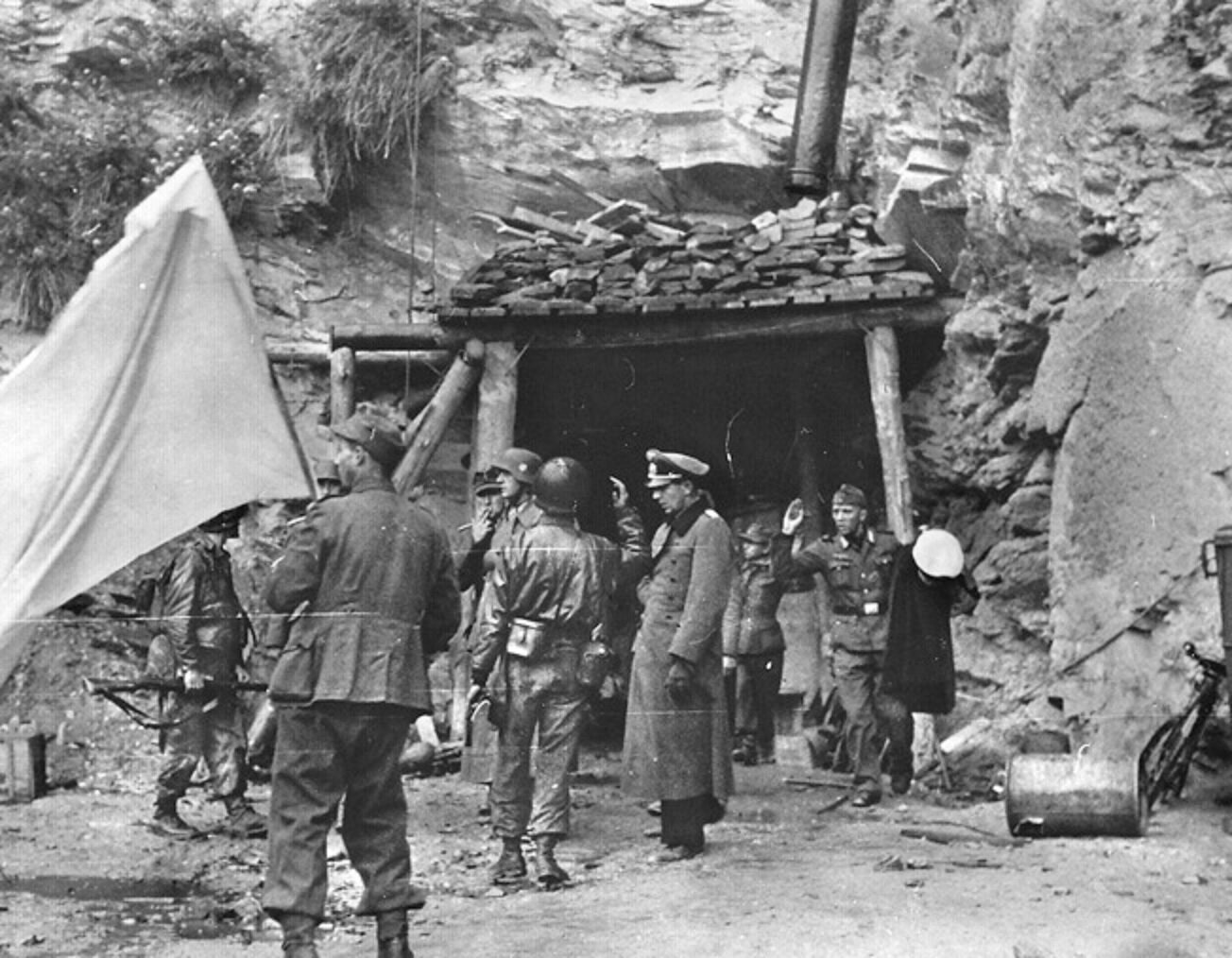
EXCLUSIVE 1941 Dated - Captured Normandy ‘Battle of Cherbourg’ German Infantry Combat Map (Heavily Marked)
Museum grade World War II ‘Battle of Cherbourg’ German infantry map captured and brought back by a WWII U.S. veteran of Virginia who fought in the Battle of Normandy, a fierce battle which took place immediately after the successful Allied landings on 6 June 1944.
Size: 23 x 39
This extremely rare, one-sided, German coastal map of Normandy is marked and dated “Sonderausgabe VII 1941” (Translated: Special Edition VII 1941” and is titled “Cherbourg”. This German infantry map is heavily marked with German troop movement and shows an overall very worn and ‘salty’ appearance of the Normandy coast and the Cotentin Peninsua.
What makes this map so rare is not just the location and WWII Normandy battlefield this map portrays but the extensive markings German map appears to show. There are heavy annotations and movement lines done in both blue and red drawn to some of the most infamous towns of the battle of Cherbourg and the Normandy port of Chebourg including the towns of Audeville, St.Germain, Omonville, Beaumonte-Hague, Hautbiville, Vasteville, and Flamanville.
While it will forever be lost to history what German infantry, division, unit and soldier this map once belonged too, it is evident that it played a key and extensive role in German troop movements and possibly supply lines before and during the Allied invasion of Normandy in Operation Overlord during World War II. Codenamed Operation Neptune and often referred to as D-Day, it was the largest seaborne invasion in history where soon they would turn their sights on the German port city of Cherbourg.
German Occupation of and Cherbourg:
On June 17, 1940, the Germans entered Cherbourg and began the occupation of the commune and its port in deep water. They set up a belt of defense, protecting both land access and maritime access, which largely reuses the artillery forts built by the French from the 18th century. As early as 1942, Adolf Hitler knew that a large-scale Allied invasion of France could turn the tide of the war in Europe. But thanks in large part to a brilliant Allied deception campaign and Hitler’s fanatical grip on Nazi military decisions, the D-Day invasion of June 6, 1944 became precisely the turning point that the Germans most feared. To ready for an invasion, in 1942, Germany began construction on the Atlantic Wall, a 2,400-mile network of bunkers, pillboxes, mines and landing obstacles up and down the French coastline. But without the money and manpower to install a continuous line of defense, the Nazis focused on established ports.
Still, the Nazis were not caught entirely by surprise by the D-Day landing. Back in 1943, Field Marshal Erwin Rommel was handpicked by Hitler to lead the German army’s defense of the Normandy region. He began by fortifying the Atlantic Wall in Normandy with more machine gun bunkers, millions of beachfront landmines, and by flooding inland marshes to trap Allied paratroopers. Rommel’s strategic preparations would ultimately help the Nazis inflict terrible Allied casualties on D-Day. In fact, if Hitler had listened to all of Rommel’s ideas, the D-Day invasion may have been a full-on disaster for the Allies. In early 1944, Rommel wanted to position Germany’s elite Panzer tank divisions as close to the French coastline as possible to repel an infantry attack. Hitler disagreed, choosing to keep most of the Panzer divisions close to Paris, and spreading the rest along the southern French coastline. Rommel was only in direct command of three of these high-powered tank divisions, and only one was in close striking distance of the Normandy coast. “Rommel was handcuffed with rules that said he couldn’t move his armored formations from the interior to Normandy without Hitler's personal approval,” says Whitlock, “and Hitler didn’t give that approval until much too late.”
Battle of Cherbourg:
The Battle of Cherbourg was part of the Battle of Normandy during World War II. It was fought immediately after the successful Allied landings on 6 June 1944. Allied troops, mainly American, isolated and captured the fortified port, which was considered vital to the campaign in Western Europe, in a hard-fought, month-long campaign.
Allied Planning:
When they drew up their plans for the invasion of France, the Allied staff considered that it would be necessary to secure a deep-water port to allow reinforcements to be brought directly from the United States. (Without such a port, equipment packed for transit would first have to be unloaded at a port in Great Britain, unpacked, waterproofed and then reloaded onto landing craft to be transferred to France). Cherbourg, at the end of the Cotentin Peninsula, was the largest port accessible from the landings.
The Allied planners decided at first not to land directly on the Cotentin Peninsula, since this sector would be separated from the main Allied landings by the Douve River valley, which had been flooded by the Germans to deter airborne landings. On being appointed overall land commander for the invasion in January 1944, British Army General Bernard Montgomery reinstated the landing on the Cotentin peninsula, partly to widen the front and therefore prevent the invaders becoming sealed into a narrow lodgement, but also to enable a rapid capture of Cherbourg.
Landings:
In the early hours of 6 June paratroopers (the US 82nd and 101st Airborne Divisions) landed at the base of the Cotentin Peninsula. Although the landings were scattered, they nevertheless secured most of the routes by which the US VII Corps would advance from Utah Beach. The US 4th Infantry Division landed on Utah Beach shortly after dawn with few casualties.
In the immediate aftermath of the landings the priority for the invasion forces at Utah Beach was to link up with the main Allied landings further east. On 9 June the 101st Airborne Division managed to cross the Douve River valley and captured Carentan the next day. After vicious house-to-house fighting during the Battle of Carentan, the airborne troops were able to take the town, ensuring the Allies a continuous front. The front was maintained despite a German counterattack reinforced by armored units on the 13th, known as the Battle of Bloody Gulch.
This success allowed VII Corps to advance westwards to cut off the Cotentin Peninsula. An additional three infantry divisions had landed to reinforce the Corps. Major General J. Lawton Collins, the Corps Commander, drove his troops hard, replacing units in the front lines or sacking officers if progress was slow.
The Germans facing VII Corps were a mix of regiments and battlegroups from several divisions, many of which had already suffered heavy casualties fighting the American airborne troops in the first days of the landings. Very few German armored or mobile troops could be sent to this part of the front because of the threat to Caen further east. Infantry reinforcements arrived only slowly. Tactically, the Germans' flooding of the Douve worked against them because it secured the Allied southern flank.
By 16 June there were no further natural obstacles in front of the American forces. The German command was in some confusion. Erwin Rommel and other commanders wished to withdraw their troops in good order into the Atlantic Wall fortifications of Cherbourg, where they could have withstood a siege for some time. Adolf Hitler demanded that they hold their present lines even though this risked disaster.
Late on 17 June Hitler agreed that the troops might withdraw but specified that they were to occupy a new, illogical defensive line, spanning the entire peninsula just south of Cherbourg. Rommel protested against this order, but he nevertheless dismissed General Farmbacher, commanding the LXXXIV Corps, who he thought was trying to circumvent it.
Assault on Cherbourg:
On 18 June the US 9th Infantry Division reached the west coast of the peninsula, isolating the Cherbourg garrison from any potential reinforcements. Within 24 hours, the 4th Infantry, 9th and 79th Infantry Divisions were driving north on a broad front. There was little opposition on the western side of the peninsula and on the eastern side, the exhausted defenders around Montebourg collapsed. Several large caches of V-1 flying bombs were discovered by the Americans in addition to a V-2 rocket installation at Brix.
In two days, the American divisions were within striking distance of Cherbourg. The garrison commander, Lieutenant General Karl-Wilhelm von Schlieben, had 21,000 men but many of these were hastily drafted naval personnel or from labour units.[citation needed] The fighting troops who had retreated to Cherbourg (including the remnants of von Schlieben's own division, the 709th), were tired and disorganised. Food, fuel and ammunition were short. The Luftwaffe dropped a few supplies, but these were mostly items such as Iron Crosses, intended to bolster the garrison's morale.[citation needed] Nevertheless, von Schlieben rejected a summons to surrender and began carrying out demolitions to deny the port to the Allies.
Collins launched a general assault on 22 June. Resistance was stiff at first, but the Americans slowly cleared the Germans from their bunkers and concrete pillboxes. Allied naval ships bombarded fortifications near the city on 25 June. On 26 June, the British elite force No. 30 Commando also known as 30 Assault Unit launched an assault on Octeville – a suburb to the south west of Cherbourg. This was the location of the Kriegsmarine naval intelligence HQ at Villa Meurice which the Commandos captured along with 20 officers and 500 men. On the same day the 79th Division captured Fort du Roule, which dominated the city and its defenses. This finished any organised defense. Von Schlieben was captured. The harbor fortifications and the arsenal surrendered on 29 June, after a ruse by Allied officers, Capt Blazzard and Col Teague, who convinced the German officers to surrender the peninsula, bluffing about their manpower and ordnance. Some German troops cut off outside the defenses held out until 1 July.